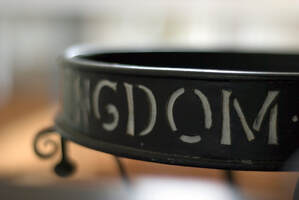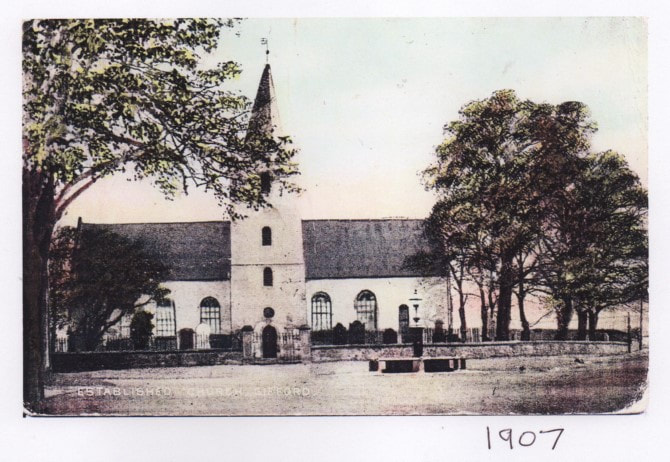A brief history of Yester Church
|
The Church’s name ‘Yester’ follows the name of the estate of the hereditary landowner. ‘Yester’ is a form of the ancient word 'Ystrad' meaning “strath”- indeed an apt description of the configuration of the district through which runs a stream, which has its springs in the Lammermuirs and, as it flows gently past the Hopes, Yester, Gifford and Colstoun to join the Tyne, it has for centuries brought freshness, charm and some water-power to the inhabitants of Yester. In 1241, David de Bernham, Bishop of St. Andrews, consecrated the Church at Yestrith. The current church building dates from 1710. (However, the bell which is rung on Sundays before worship dates from 1492, and is certainly a survival from the earlier building.) The first worshippers in the building would have found unplastered stone walls and a stone floor, empty save for the pulpit and perhaps one or two fixed seats around the walls and a few bench seats under the end galleries. The rest of the congregation stood or sat on stool they had brought with them. There were no pews, no organ, no railings, no panelling, no platforms. The Marquis of Tweeddale, as landowner and principal heritor, had the Tweeddale gallery, with its retiring room and private outside stair, while the other heritors occupied the north and south galleries. Only in 1830/1, a wooden floor was laid, the church was fitted out with pews and with table seats under the Laird's loft, the floors in the galleries were stepped to provide tiered seating and the steeple rebuilt.
|
|
Yester Church is in the village of Gifford – a name which has applied to the village for the past two or three centuries, and which came originally from the family name of the landowners, the most famous member being Hugo de Gifford celebrated by Sir Walter Scott in “Marmion.” Walter de Gyffarde was one of the foremost of the Norman Nobles who accompanied William the Conqueror in 1066. A branch of the family was welcomed to Scotland by David I in the 12th century. In Yester house, there exists a Royal Charter dated 1190, given by William the Lion, granting these lands to the de Giffords. The old church and village of Yester, also often known as "Bothans", were situated near the present Yester House. |
|
Although it is sometimes claimed that John Knox, called “Giffordiensis” by his friend Beza, came from the village, it is now more generally accepted that John Knox was born at Gifford Gate, Haddington. One of the most famous sons of this parish is the Rev John Witherspoon (1723-1794), who became President of Princeton College, New Jersey in 1768. He was the first Moderator of the Presbyterian Church of America and was the only clergyman to sign the American Declaration of Independence in 1776. John Witherspoon was brought up in Gifford, and was a descendant of John Knox on his mother's side, and his father, the Rev James Witherspoon, was minister at Yester Kirk from 1720-1759.
The 300th Anniversary of the first service in the church was held in September 2010. In the past few years, extensive refurbishment work has taken place in the building and the church tower. |
In 2015, Yester Parish united with the neighbouring (and previously linked) parish of Bolton and Saltoun Church, to form the new parish of Yester, Bolton and Saltoun Church, linked with Humbie Church.


